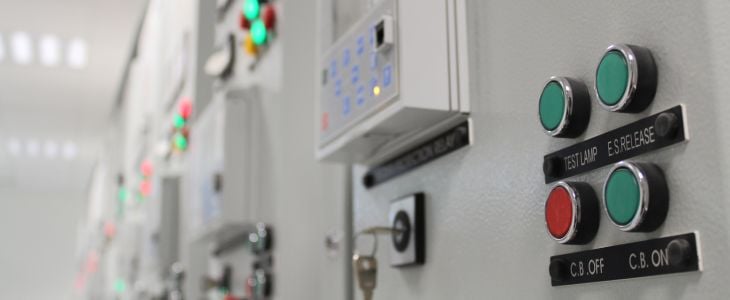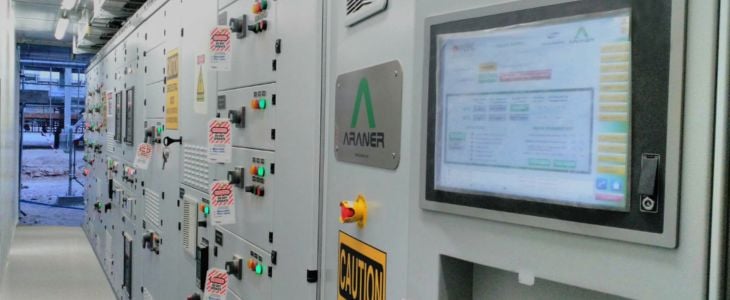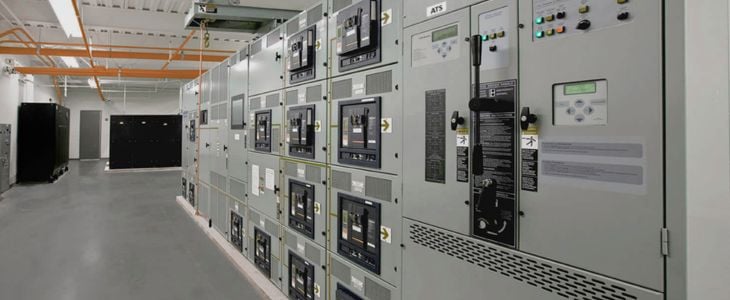Despite their differences, Variable Frequency Drives and Soft Starters are key equipment components in the world of industrial refrigeration.
From the heart of your cooling system to the peripherals that ensure smooth operations, these components play a vital role in achieving efficiency, reliability, and sustainability in your refrigeration setup. As such, there’s no question on how selecting the right equipment components remains a pivotal decision.
In the context of industrial refrigeration processes, it’s common to find that many of the problems related to security failures originate in wrong decisions during the design of equipment. And the choice of the right industrial refrigeration components lies at the heart of that very process.
In fact, industrial refrigeration can be understood as an intricate dance where temperature control plays a key role in ensuring efficiency, reliability and quality of operations. While the refrigeration cycle is without a doubt a remarkable engineering marvel, it must be orchestrated in a precise manner, ensuring all components fulfill their unique role efficiently.
As such, both VFDs and Soft Starters are consider motor drivers. However, there are key nuances to be considered within that process.
Let us guide you through both pieces of equipment and some key considerations on how to choose when it comes to these critical building blocks for a refrigeration system.
What are Variable Frequency Drives
Variable Frequency Drives (VFDs) are electronic devices used to control the speed, torque, and power output of electric motors by varying the frequency and voltage supplied to the motor.
Also known as Variable Speed Drives (VSDs) and Adjustable Frequency Drives (AFDs), they have several important applications in the context of industrial refrigeration, and are typically used when the applications present the following requirements:
- Accurate or custom speed control
- Energy saving needs
- A combination of reducing starting currents while the starting torque remains high
What are Soft Starters
Soft Starters are electronic devices used to control and manage the starting and stopping of electric motors.
Their main feature is their capacity to reduce the initial power surge, mechanical stress, and voltage fluctuations associated with the direct starting of motors, which is particularly true in the case of large industrial refrigeration systems.
As such, Soft Starters are typically used in applications that need:
- A light start
- A reduced inrush current during startup (in large motors)
- Full control on speed and torque but only during startup and shutdown
Advantages of Variable Frequency Drives
Energy efficiency
VFDs are capable of improving energy efficiency of industrial refrigeration systems by adjusting the motor's speed according to the actual cooling demand. In fact, they’re known to provide a higher energy efficiency than Soft Starters. An example, following affinity laws, is the reduction of speed of a fan by half, which originates an energy consumption of only ⅛ compared to full speed values.

Precise control
Variable Frequency Drives are also known for their precise control over motor speed and refrigeration system output. This fine-tuned control of starting, stopping and acceleration is particularly important for accurate temperature regulation in industrial refrigeration applications.
At the same time, VFDs help maintain a more stable temperature control by adjusting the speed of compressors and fans in response to load changes, which in turn reduces temperature fluctuations.
Capacity modulation
VFDs also enable capacity modulation of compressors and fans. This allows the refrigeration system to adapt to changing loads, an essential step for industries with varying cooling requirements.
Reduced peak demand
The use of Variable Frequency Drives allows for a reduction in the initial inrush current when starting a motor, which typically leads to a lower peak power demand. This results in cost savings in terms of electricity demand charges.
Constant torque
VFDs manage to provide constant torque and continuous feedback even if load conditions vary, which eliminates mechanical shocks. This constant level of mechanical output is crucial to ensure consistent performance and reliable temperature control.
Additionally, this fine-tuned control optimizes energy efficiency by reducing overcooling or undercooling scenarios, which can lead to energy waste in refrigeration systems.
Operation at variable speeds
The capacity of VFDs Variable Frequency Drives to allow motors to operate at variable speeds translates into key advantages, such as a general improvement of processes, energy efficiency and the extension of the equipment’s life cycle.

Advantages of soft starters
Motor protection
The main benefit of using Soft Starters is they help protect electric motors from damage by gradually ramping up the voltage and current supplied to the motor. This prevents potential issues such as excessive wear and tear on the motor's mechanical components.
In turn, they also reduce mechanical stress which is typically produced when a motor starts. Instead, they guarantee a smoother start and prevent mechanical shocks.
All in all, this results in an improved equipment reliability and an extended service life.
Energy savings
Soft Starters can help reduce energy consumption by limiting the initial surge of electrical current, resulting in lower peak power demand, as well as reduced operational costs. Soft starters have higher efficiency (lower electrical losses) than VFDs. Therefore they are more efficient as starter.
Lower costs
Compared to Variable Frequency Drives, Soft Starters are less expensive. At the same time, they tend to require lower maintenance costs, thanks to needing less panel space and less internal and external components than a drive.

Voltage stabilization
Soft starters help maintain more stable voltage levels by minimizing voltage drops and spikes during motor start-up.
How to choose between Variable Frequency Drives and Soft Starters
When it comes to choosing between Variable Frequency Drives and Soft Starters, designers typically look at the following three parameters:
- Is speed control required? If that’s the case, VFDs are needed
- Is the chiller going to work most of the time at high load (for example in case of TES tank)? In this case, Soft Starters might be the most suitable option.
- Is size important? Soft Starters might be the right solution, as they tend to be smaller.
When it comes to industrial refrigeration, at ARANER we know all too well the importance of choosing the right equipment components to effectively reduce temperatures, achieve optimal operating conditions, and avoid safety issues.
This is why we offer custom industrial refrigeration systems, helping companies achieve equipment that present a precise synergy between all components and processes.
Thanks to our expertise and in-depth technical knowledge of industrial refrigeration systems, including the complex interactions among components, we’re able to understand the nuances and thus make informed decisions to achieve top-grade equipment.
We’ve compiled an Industrial Refrigeration Reference ebook that examines the working principles of this process and analyzes the new trends in the market, including the latest technologies for heat rejection, and the most relevant applications of industrial refrigeration equipment.
However, if you want to learn more about how to make the right choice for your equipment, get in touch with our team and discover how we can help you.










